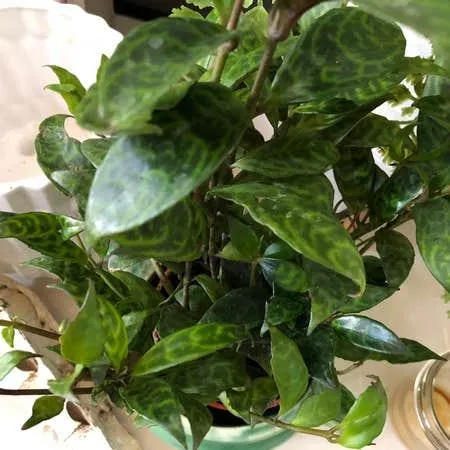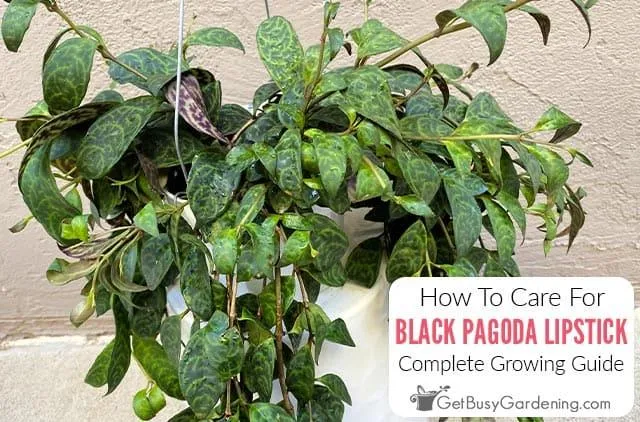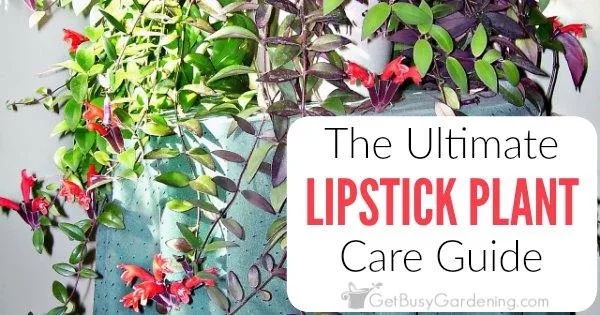Can You Keep Aeschynanthus Plants With Cats?
If you’re wondering whether it’s safe to have aeschynanthus or lipstick plants in your home with cats, this article will help you understand the ins and outs of keeping these colorful vines in a cat-friendly environment. Commonly known as lipstick plants, aeschynanthus make beautiful hanging basket or tabletop plants but some varieties can be mildly toxic to cats if ingested. By taking a few precautions, however, you can enjoy these eye-catching flowers safely with your furry friends.
Are Aeschynanthus Plants Toxic to Cats?
While aeschynanthus plants are generally considered non-toxic to cats, some varieties do contain small amounts of saponins – natural plant compounds that can cause minor gastrointestinal upset if eaten in large quantities. The good news is that for a cat to experience any symptoms, they would need to consume a fairly significant amount of the plant material. Most nibbles or licks are unlikely to cause harm.
From my experience owning both cats and aeschynanthus plants, minor contact with the leaves or flowers has never been an issue. The toxicity levels are quite low compared to highly poisonous plants. Unless a cat was to eat a whole vine or multiple leaves, any effects would likely be mild and transient, such as slight vomiting or diarrhea. At the same time, it’s always best to err on the side of caution with pets.

Tips For Keeping Aeschynanthus Plants Safe With Cats
- Place hanging baskets or plants up high out of reach on shelving, bookshelves or wall mounts instead of at tabletop height.
- Opt for varieties with stiffer, less tasty-looking leaves over cascading types that may be more enticing for cats to chew or nibble.
- Provide plenty of approved cat toys and scratching posts as alternatives so cats are less tempted to play with or taste the plants.
- Trim away any dead or dying sections promptly which could be more appealing for cats to investigate.
- Monitor cats closely if they show interest in the plants and gently deter them until they learn to leave the aeschynanthus alone.
While keeping plants out of reach is key, in my experience cats can still be naturally curious despite their owners’ best efforts. Here’s one strategy I’ve used successfully to minimize plant chews – distract kitties with an approved plant-scented toy placed near the aeschynanthus. The appealing floral aroma holds their interest instead of the real thing!
Lipstick Plant Care Tips For Cat Guardians
In addition to placement and proofing, here are some general tips for growing aeschynanthus happily indoors with cats:
- Water only when the top 1-2 inches of soil are dry to discourage cats from accidently getting dirt on their paws then licking it off later.
- Fertilize monthly in the spring and summer growing seasons with a diluted, all-purpose plant food.
- Prune off spent flower spikes for continuous blooming and to minimize any dead sections that could encourage chomps.
- Provide humidity by grouping plants together or setting them on pebble trays filled with water.
- Rotate hanging baskets or rearrange shelf positions every few weeks so plants remain intriguing without becoming an obsessive chew target.
- Inspect aeschynanthus leaves and vines regularly for any teeth marks and promptly dispose of any opened or munched pieces.
Non-Toxic Plants That Pair Well With Aeschynanthus And Cats
If budget allows, surrounding your lipstick plants with other colorful, cat-safe greenery not only looks beautiful but spreads out potential kitty interest. Some top non-toxic picks are:

- Spider plants – With their airy leaves and kittens-paw flower clusters, these easy-care plants are a cat classic.
- Peace lilies – Their large glossy leaves and bold white blooms thrive in medium to low light.
- Pothos – Vivacious vines in gold or dark green shades trail attractively over shelves and furniture.
- Philodendrons – From heart-shaped to lacy, their hardy textures are enduring cat magnets.
- Chinese evergreens – Rosetted broad leaves emerge in shades of burgundy, green and gold all year.
Dealing With The Rare Aeschynanthus Mishap
Despite precautions, accidents may still happen on occasion. If you notice signs that a cat has gotten into the aeschynanthus, like leaves or flowers missing, here are my recommendations:
- Keep an eye on your cat and look for any unusual behavior, lethargy or gastrointestinal upset.
- Contact your veterinarian right away if symptoms appear – they may induce vomiting or administer activated charcoal to bind any plant toxins.
- In minor cases with no symptoms, increased supervision may sufficiently resolve the situation.
- Consider rehoming the aeschynanthus with a plant-safe friend if access issues persist despite precautions.
- Don’t panic – remember that these plants’ toxicity is relatively low compared to true dangers like lilies or poison ivy.
In conclusion, with a bit of plant-proofing and routine checks, it’s definitely possible to enjoy the beauty of aeschynanthus vines and flowers alongside your furry friends. I hope these tips help give you peace of mind when thinking about adding these stunning blooms to your indoor plant collection. Let me know if you have any other questions!
Essential Facts About Choosing an Aeschynanthus Cat Plant
| Trait | Details |
|---|---|
| Size | Ranges from 6 inches to 3 feet tall depending on variety |
| Light Needs | Prefers bright indirect light but can tolerate low light |
| Water | Keep soil moist but not soggy. Allow top inch to dry between waterings. |
| Blooms | Flowers profusely year-round in proper conditions. Blooms signal plant is happy. |
| Soil | Welldraining potting mix. Tolerates slightly moist soil but avoid soggy conditions. |
| Temperature | Prefers warm temperatures between 65-80°F. Will tolerate brief spells down to 55°F. |
| Humidity | Higher humidity aids flowering but tolerant of average home conditions. |
FAQ
-
What is an aeschynanthus?
Aeschynanthus, often called lipstick plants, are flowering plants that basically come from tropical regions like Asia and Africa. They have colorful hanging tube shaped blooms that look sorta like lipstick tubes, which is where they get their nickname from.

-
How do you care for an aeschynanthus plant?
Caring for lipstick plants is pretty easy. They like bright, indirect sunlight and adequate water – kind of like most houseplants. Water them whenever the top inch of soil dries out. They also appreciate high humidity, so group them with other plants or use a pebble tray. Fertilize during the growing season from spring to fall. That’s about it really!
-
What kind of conditions do aeschynanthus need?
Aeschynanthus, or lipstick plants as they’re commonly called, thrive in warm, humid conditions. They need temperatures around 70-80°F and moderate watering. Despite their tropical origins, they can tolerate some dryness as long as the soil doesn’t completely dry out. High humidity is awesome for them too. On the other hand, cold drafts or low light will send them south in a hurry.
-
Do aeschynanthus bloom year-round?
While aeschynanthus put on an amazing display of color practically non-stop in their natural habitat, they may take some breaks when grown indoors. The flowering is often seasonal based on changes in light and temperature. Nevertheless, many varieties will keep the blooms coming consistently with the right care. Perhaps giving them slightly cooler temps and fewer fertilizers in the winter may induce a period of rest and recharge.

-
How long do aeschynanthus flowers last?
An individual flower on a lipstick plant typically lasts around two weeks, which isn’t very long compared to other houseplants. However, the flowers tend to come in waves so you’ll have colorful blooms for months at a time if conditions are good. Keeping the plant bushy with regular pruning and pinching back new growth also prolongs flowering. So while single blooms fade quickly, the whole plant puts on quite a stunning floral display for a lengthy period.
-
Are aeschynanthus poisonous to pets?
All parts of the aeschynanthus plant are considered toxic to dogs and cats if consumed. While it doesn’t appear to be one of the most poisonous houseplants, it’s best to keep it out of reach if you have furry pets in the home. The biggest risks seem to be gastrointestinal upset. So to be on the safe side, maybe put it up high or behind a baby gate. Kids should also be cautioned not to eat any parts of the plant. Despite that, it’s still a lovely and easygoing addition for brightening up your space!
